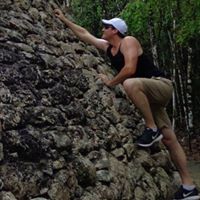Matthew J Reiter
age ~62
from Villa Park, IL
- Also known as:
-
- Mathew J Reiter
- Margaret K Reiter
- Martin F Reiter
- Phone and address:
-
50 E Harrison St, Villa Park, IL 60181
(630)2798715
Matthew Reiter Phones & Addresses
- 50 E Harrison St, Villa Park, IL 60181 • (630)2798715
- Addison, IL
- Bensenville, IL
- 50 E Harrison St, Villa Park, IL 60181 • (630)3366103
Work
-
Position:Installation, Maintenance, and Repair Occupations
Education
-
School / High School:New York University School of Law
Ranks
-
Licence:New York - Currently registered
-
Date:2001
Lawyers & Attorneys

Matthew Thomas Reiter - Lawyer
view sourceAddress:
Baer & Karrer Ag
(582)615000x (Office)
(582)615000x (Office)
Licenses:
New York - Currently registered 2001
Education:
New York University School of Law
Us Patents
-
Selectively Heat Treated Airbag Canister And Method For Making Same
view source -
US Patent:6589373, Jul 8, 2003
-
Filed:Oct 2, 2001
-
Appl. No.:09/969209
-
Inventors:Michael Starozhitsky - Buffalo Grove IL
Matthew J. Reiter - Northbrook IL -
Assignee:Illinois Tool Works, Inc. - Glenview IL
-
International Classification:C21D 104
-
US Classification:148570, 148572, 148590, 280741, 29 123, 29 13, 298972, 72 3106, 723671
-
Abstract:A selectively heat treated canister for use in a vehicle airbag deployment system is configured to contain combustion materials and to contain gases produced from the combustion thereof. The canister includes a tubular body having a length and a longitudinal axis. The body is formed as at least three drawn sections. Each prior section is drawn one more time than a successive adjacent section. The canister defines a closed end and an open end. The closed end is at a least drawn section and the open end is at a most drawn section. The canister defines a heat treated region and is selectively heat treated at least one transition zone between adjacent drawn sections to reduce crack propagation observed during testing. A method for making the canister is also disclosed.
-
Anchor Bolt And Annularly Grooved Expansion Sleeve Assembly Exhibiting High Pull-Out Resistance, Particularly Under Cracked Concrete Test Conditions
view source -
US Patent:7744320, Jun 29, 2010
-
Filed:Feb 29, 2008
-
Appl. No.:12/073141
-
Inventors:Robert G. Kobetsky - Chicago IL, US
Michael Starozhitsky - Long Grove IL, US
Matthew J. Reiter - Grayslake IL, US
Donald Broomfield - Elgin IL, US -
Assignee:Illinois Tool Works Inc. - Glenview IL
-
International Classification:F16B 13/06
-
US Classification:411 601, 411 69, 411 72
-
Abstract:A wedge-type anchor assembly, capable of meeting cracked concrete testing standards, comprises an anchor bolt component and a substantially C-shaped expansion sleeve component annularly disposed about the anchor bolt component. A plurality of annular grooves, threads, or teeth are disposed only about the forward end portion of the expansion sleeve component, as opposed to throughout the entire axial length thereof, so that when the anchor bolt component is moved axially through the expansion sleeve component, the maximum interference area (M. I. A. ) and maximum interference volume (M. I. V. ) can be generated between the anchor bolt component and the expansion sleeve component in a controlled and predictable manner, as well as between the expansion sleeve component and the internal peripheral side wall portions of a concrete substrate or substructure can be generated so as to enhance pull-out resistance and reliability of the anchor assembly within the concrete substructure or substrate. The expansion sleeve component may be plated with a tin-zinc (Sn—Zn) composition, and the rear end portion of the expansion sleeve component may have a larger diametrical extent than the forward end portion of the expansion sleeve component so as to enhance pull-out resistance.
-
Anchor Bolt And Annularly Grooved Expansion Sleeve Assembly Exhibiting High Pull-Out Resistance, Particularly Under Cracked Concrete Test Conditions
view source -
US Patent:7811037, Oct 12, 2010
-
Filed:Nov 13, 2006
-
Appl. No.:11/598025
-
Inventors:Robert G. Kobetsky - Chicago IL, US
Michael Starozhitsky - Long Grove IL, US
Matthew J. Reiter - Grayslake IL, US
Donald Broomfield - Elgin IL, US -
Assignee:Illinois Tool Works Inc. - Glenview IL
-
International Classification:F16B 13/06
-
US Classification:411 601, 411 69, 411 72
-
Abstract:A wedge-type anchor assembly, capable of meeting cracked concrete testing standards, comprises an anchor bolt component and a substantially C-shaped expansion sleeve component annularly disposed about the anchor bolt component. A plurality of annular grooves, threads, or teeth are disposed only about the forward end portion of the expansion sleeve component, as opposed to throughout the entire axial length thereof, so that when the anchor bolt component is moved axially through the expansion sleeve component, the maximum interference area (M. I. A. ) and maximum interference volume (M. I. V. ) can be generated between the anchor bolt component and the expansion sleeve component in a controlled and predictable manner, as well as between the expansion sleeve component and the internal peripheral side wall portions of a concrete substrate or substructure can be generated so as to enhance pull-out resistance and reliability of the anchor assembly within the concrete substructure or substrate.
-
Anchor Bolt And Annularly Grooved Expansion Sleeve Assembly Exhibiting High Pull-Out Resistance, Particularly Under Cracked Concrete Test Conditions
view source -
US Patent:8302276, Nov 6, 2012
-
Filed:May 20, 2010
-
Appl. No.:12/801069
-
Inventors:Robert G. Kobetsky - Chicago IL, US
Michael Starozhitsky - Long Grove IL, US
Matthew J. Reiter - Grayslake IL, US
Donald Broomfield - Elgin IL, US -
Assignee:Illinois Tool Works Inc. - Glenview IL
-
International Classification:B23Q 17/00
F16B 13/06 -
US Classification:2940708, 2940705, 2940701, 2940709
-
Abstract:A wedge-type anchor assembly, capable of meeting cracked concrete testing standards, comprises an anchor bolt component and a substantially C-shaped expansion sleeve component annularly disposed about the anchor bolt component. A plurality of annular grooves, threads, or teeth are disposed only about the forward end portion of the expansion sleeve component, as opposed to throughout the entire axial length thereof, so that when the anchor bolt component is moved axially through the expansion sleeve component, the maximum interference area (M. I. A. ) and maximum interference volume (M. I. V. ) can be generated between the anchor bolt component and the expansion sleeve component in a controlled and predictable manner, as well as between the expansion sleeve component and the internal peripheral side wall portions of a concrete substrate or substructure can be generated so as to enhance pull-out resistance and reliability of the anchor assembly within the concrete substructure or substrate.
-
Anchor Bolt And Annularly Grooved Expansion Sleeve Assembly Exhibiting High Pull-Out Resistance, Particularly Under Cracked Concrete Test Conditions
view source -
US Patent:8491244, Jul 23, 2013
-
Filed:Dec 28, 2009
-
Appl. No.:12/654633
-
Inventors:Robert G. Kobetsky - Chicago IL, US
Michael Starozhitsky - Long Grove IL, US
Matthew J. Reiter - Grayslake IL, US
Donald Broomfield - Elgin IL, US -
Assignee:Illinois Tool Works Inc. - Glenview IL
-
International Classification:F16B 13/06
-
US Classification:411 601, 411 72
-
Abstract:A wedge-type anchor assembly, capable of meeting cracked concrete testing standards, comprises an anchor bolt component and a substantially C-shaped expansion sleeve component annularly disposed about the anchor bolt component. A plurality of annular grooves, threads, or teeth are disposed only about the forward end portion of the expansion sleeve component, as opposed to throughout the entire axial length thereof, so that when the anchor bolt component is moved axially through the expansion sleeve component, the maximum interference area (M. I. A. ) and maximum interference volume (M. I. V. ) can be generated between the anchor bolt component and the expansion sleeve component in a controlled and predictable manner, as well as between the expansion sleeve component and the internal peripheral side wall portions of a concrete substrate or substructure can be generated so as to enhance pull-out resistance and reliability of the anchor assembly within the concrete substructure or substrate. The expansion sleeve component may be plated with a tin-zinc (Sn—Zn) composition, and the rear end portion of the expansion sleeve component may have a larger diametrical extent than the forward end portion of the expansion sleeve component so as to enhance pull-out resistance.
-
Selectively Heat Treated Airbag Canister And Method For Making Same
view source -
US Patent:6364355, Apr 2, 2002
-
Filed:Jun 15, 2000
-
Appl. No.:09/595257
-
Inventors:Michael Starozhitsky - Buffalo Grove IL
Matthew J. Reiter - Northbrook IL -
Assignee:Illinois Tool Works Inc. - Glenview IL
-
International Classification:B60R 2128
-
US Classification:280741
-
Abstract:A selectively heat treated canister for use in a vehicle airbag deployment system is configured to contain combustion materials and to contain gases produced from the combustion thereof. The canister includes a tubular body having a length and a longitudinal axis. The body is formed as at least two drawn sections. Each prior section is drawn one more time than a successive adjacent section. The canister defines a closed end and an open end. The closed end is at a least drawn section and the open end is at a most drawn section. The canister defines a heat treated region and is selectively heat treated at at least one transition zone between adjacent drawn sections to reduce crack propagation observed during testing. A method for making the canister is also disclosed.
Resumes

Launch Manager
view sourcePosition:
Launch Manager at World 50, Inc.
Location:
Atlanta, Georgia
Industry:
Management Consulting
Work:
World 50, Inc. since Mar 2013
Launch Manager
World 50, Inc. Mar 2011 - Mar 2013
Membership Development Associate
World Games 2010 Foundation, Inc May 2008 - Oct 2010
Marketing & New Media Coordinator
World Games 2010 Foundation, Inc Jan 2008 - May 2008
Marketing & Sales Intern
University of Kentucky Athletic Association Jun 2007 - Dec 2007
Media Relations Intern
Launch Manager
World 50, Inc. Mar 2011 - Mar 2013
Membership Development Associate
World Games 2010 Foundation, Inc May 2008 - Oct 2010
Marketing & New Media Coordinator
World Games 2010 Foundation, Inc Jan 2008 - May 2008
Marketing & Sales Intern
University of Kentucky Athletic Association Jun 2007 - Dec 2007
Media Relations Intern

Project Manager At Itw Technology Center
view sourceLocation:
Greater Chicago Area
Industry:
Research
Flickr

Matthew Reiter Dallas / ...
view sourceMatthew Reiter (Dallas / Fort Worth, TX)

Matthew Reiter Central J...
view sourceFriends:
Daniel J Cuoco, Laura Green, Edwin Arbito, Ellen Morstein
Matthew Reiter (Central Jersey, NJ)

Matthew Reiter Tucs AZ
view sourceFriends:
Todd Southard, Bryan Olson, Gretchen Hall, Kenyon Kehl, Jim Roden
Matthew Reiter (Tucson, AZ)

Matthew Reiter Athens GA
view sourceMatthew Reiter (Athens, GA)

Matt Reiter Lexingt KY
view sourceMatt Reiter (Lexington, KY)

Matt Reiter
view source
Matthew Reiter
view sourceFriends:
Jack Nicolaus, George Franklin, Kerri St Jean, Nick Streets, Andrew Aldana
Classmates

Matthew Reiter
view sourceSchools:
Little Chute High School Little Chute WI 1988-1992
Community:
Brian Bowers, Darrell Kringle

Matthew Reiter, Massillon...
view sourceMatthew Reiter 1992 graduate of Perry High School in Massillon, OH

Matt Reiter, Milwaukie, OR
view sourceMatt Reiter 2004 graduate of Rex Putnam High School in Milwaukie, OR

Matt Reiter, San antonio,...
view sourceMatt Reiter 1985 graduate of Clark High School in San antonio, TX

Annie Gale Junior High Sc...
view sourceGraduates:
Matt Reiter (1999-2002),
Ardene Dmyterko (1987-1990),
Gurtaj Chahal (1998-1999),
Lindsey Sharp (1997-2000),
Jeremy Huybregts (1995-1998)
Ardene Dmyterko (1987-1990),
Gurtaj Chahal (1998-1999),
Lindsey Sharp (1997-2000),
Jeremy Huybregts (1995-1998)

Little Chute High School,...
view sourceGraduates:
Robert Meidam (1988-1992),
Matthew Reiter (1988-1992),
Julie Demerath (1975-1979)
Matthew Reiter (1988-1992),
Julie Demerath (1975-1979)

New Richmond High School,...
view sourceGraduates:
Andrew Franko (1984-1988),
George Fernstrom (1966-1970),
Tammy Giese (1973-1977),
Brenda Smith (1978-1982),
Matthew Reiter (1989-1993)
George Fernstrom (1966-1970),
Tammy Giese (1973-1977),
Brenda Smith (1978-1982),
Matthew Reiter (1989-1993)

Hereford High School, Her...
view sourceGraduates:
Bryan Blackwell (1997-2001),
Patricia Mendiaz (1992-1996),
Christine Kimball (1989-1993),
Ismael Bribiesca (1991-1995),
Matthew Reiter (1992-1996)
Patricia Mendiaz (1992-1996),
Christine Kimball (1989-1993),
Ismael Bribiesca (1991-1995),
Matthew Reiter (1992-1996)
Youtube
Googleplus

Matthew Reiter

Matthew Reiter

Matthew Reiter

Matthew Reiter
About:
Car enthusiast.

Matthew Reiter
Myspace
Get Report for Matthew J Reiter from Villa Park, IL, age ~62












